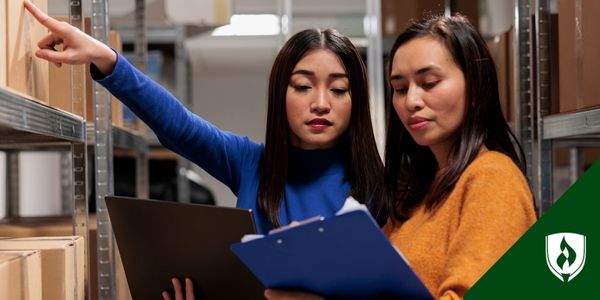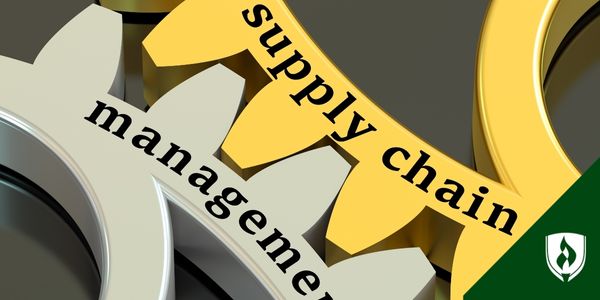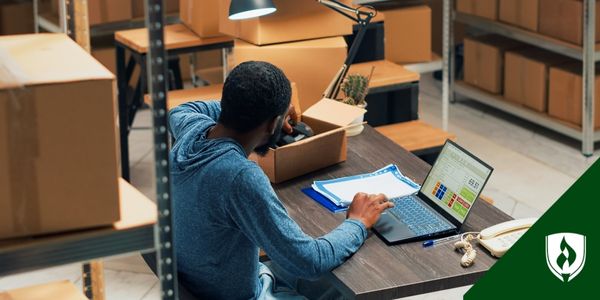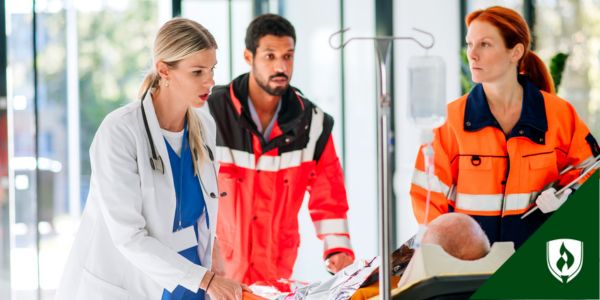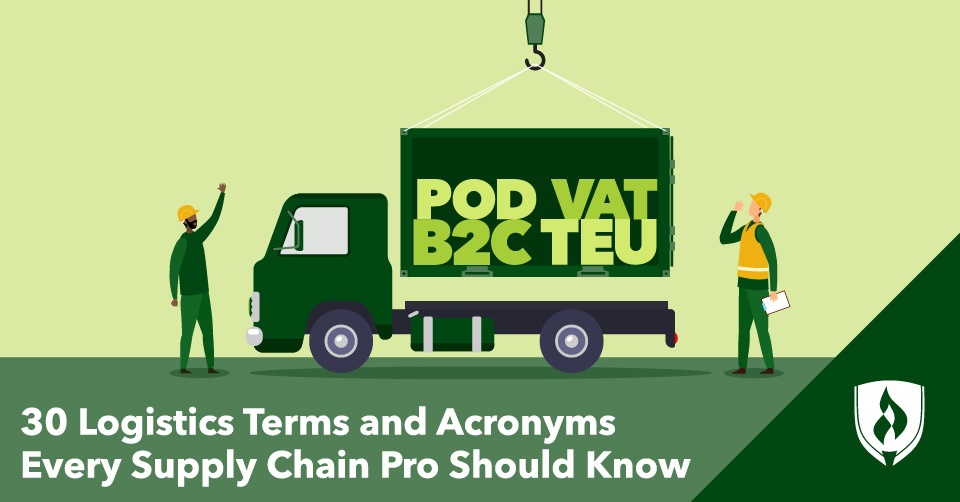
Unless you know the language of the land, you cannot thrive. If you are planning to visit a country that speaks a language foreign to you, one of the first things you do is grab a phrasebook to get a handle on the basics. Phrases like “hello,” “goodbye,” “please,” “thank you,” and of course, “where is the bathroom?” are all essential for functioning in a new place. When you have some basic elements of a language down, you have a foundation to build on, and before you know it, you’re impressing locals with your ability to speak and understand.
Starting in a new industry can come with a similar challenge. Each industry has its own jargon, new terms and acronyms that can throw you for a loop when you first encounter them. The logistics industry has a particularly unique language that can leave newcomers looking lost.
If you’d rather walk into the room with a little more competence and confidence, we’ve gathered an introductory pallet of supply chain terms and acronyms that are common across the logistics world. Every little bit can go a long way to enhance your first experiences in the industry.
30 Logistics terms and acronyms to know
Let’s start learning a variety of supply chain and logistics terms and abbreviations to help give you a leg up in your understanding.
1. Supply chain management vs. logistics
It’s helpful to understand the distinction between the terms supply chain management and logistics. Logistics is a subsection of the supply chain that focuses on the physical distribution of a product to and from destinations. Supply chain management is much broader and contains logistics, but it also has to do with procurement, production and related financial transactions.
2. Business-to-business (B2B)
In a logistics context, B2B refers to the delivery of goods from one business to another. Distinct from business-to-consumer (B2C), B2B shipments typically involve larger-scale orders and tend to involve a longer-term working relationship between companies.
3. Business-to-consumer (B2C)
B2C refers to the delivery of goods from a business directly to a consumer. Unlike B2B shipments, B2C generally involves smaller purchases that happen much more infrequently.
4. Intermodal transport
Intermodal transport is a term that refers to moving freight by using multiple forms of transportation (ships, railways, planes, etc.).
5. Reverse logistics
Reverse logistics is the process of moving goods from consumers back to the sellers. Depending on the specific reason for the return, the process can end with the distributor or the manufacturer. Goods that go through the reverse logistics process are typically used for resale or recycling.
6. General Agreement on Tariffs and Trade (GATT)
GATT is a post-WWII trade agreement that helped reduce trade barriers and tariffs between countries. To this day, GATT continues to have a major impact on how logistics is conducted by keeping the average tariff rate between participating countries around 5 percent.1
7. Consignor and consignee
The individual or company that is shipping the goods is the consignor, while the entity receiving the goods is the consignee. The consignee can also play the role of the middleman who retains the goods to pass along to another party or final buyer.
8. Proof of delivery (POD)
POD is the process that creates the documentation validating the receipt of goods between the supplier, distributor and customer. This documentation helps ensure that all the goods being transported are accurately accounted for.
9. Bill of lading
On the other side of the proof of delivery is the bill of lading. The bill of lading is the legal document shippers have with information about the cargo. The consignee will check the bill of lading against the shipment received before signing the proof of delivery.
10. Value added tax (VAT)
VAT is a tax that values the item at each stage of shipping—from raw materials, to production, to manufacturing, to the final sale. This tax is charged at various stages of the supply chain. It is important to note that while the U.S. does not charge a VAT tax on imports, the European Union generally does charge it.
11. Load tender
Load tendering is the process of offering cargo to multiple carriers in order to find the best price. This process is key because it allows shipping companies to explore offers while still retaining the ability to accept or reject the service.
12. Unit load device (ULD)
A ULD is a device used for grouping and restraining cargo for air transport. Each ULD has a unique code for the moving of various pallets and containers.
13. Tare weight vs. gross weight
Tare weight is the measured weight of an empty vehicle or container. Gross weight is the total weight of the package or shipment, including the container.
14. Electronic data interchange (EDI)
EDI is the important “paper replacer” in the logistics industry. Rather than sending all information on paper, the EDI allows businesses to process and send documents, like purchase orders and invoices, electronically.
15. Certificate of origin
A certificate of origin is a document that shows where a certain good was produced, manufactured or processed in a country. It will contain the exporter, consignee, shipment routing and goods description.
16. Freight All Kinds (FAK)
The FAK classification allows commodities of different freight classes to be shipped in a single group. This broad classification is useful because it allows higher-class commodities to travel with other goods at a lower cost.
17. Twenty-foot equivalent unit (TEU)
TEU is the exact measurement used to determine how cargo can fit on container ships and terminals. Shipping companies will give rates based on calculating the TEU.
18. Container yard
A container yard is a place to store cargo before and after sailing. Whether containers are coming or going, the organization and processing that takes place at a container yard is a key part of the logistics process.
19. Less-than truckload (LTL)
LTL is a common logistics term that refers to shipping relatively small loads or quantities of freight. For businesses looking to ship small items, LTL services can be a key part of saving money.
20. Freight forwarder
A freight forwarder is a company acting as an intermediary between the original company making the shipment and the final destination for goods. Generally, freight forwarders buy large quantities of space on ocean carriers at a discount price and then handle all the processing of documents to help make the shipping process run smoothly.
21. Advanced shipment notice (ASN)
Shippers send this document (usually via EDI) to the receiver prior to the departure of the shipment. The ASN contains all the information about the upcoming shipment and the contents.
22. Chargeable weight
This is the measurement used by freight carriers to determine the price when goods are shipped. Generally speaking, the chargeable weight is connected to the gross weight of a shipment.
23. Third-party logistics (3PL)
3PL is a broad term used to describe a company that manages all aspects of logistics, from warehousing to shipping, for another business. Companies hire 3PLs to take care of any facet of logistics.
24. Blanket purchase order
A blanket purchase order is an order from a company involving a long-term contract. Instead of making repeat orders individually, companies can set routine shipments from a company for regular intervals of time.
25. Automated broker interface (ABI)
The ABI is the primary system for processing trade entries and other electronic documentation. ABI helps facilitate cargo clearance and cargo movement and serves as a repository for shipment data.
26. Deadhead
A deadhead is a semitruck with an empty trailer. “Deadhead” trips are ideally kept to a minimum for carriers, as empty trailer trips can be dangerous and result in a loss of money.
27. Free on board (FOB) origin and destination
FOB is a term indicating who has liability once a product has left the seller’s warehouse. FOB origin means that if damage occurs to a product during shipment, the buyer will have to cover it. FOB destination means the liability remains with the seller until the product reaches its destination.
28. Demurrage
A demurrage is an extra charge given to the consignee for various container issues. Some common demurrages are connected to late container returns and overweight or damaged containers.
29. Request for Proposal (RFP)
RFPs are documents companies create to attract the best 3PL company for their specific needs. RFPs detail what the company is looking for, a bit of the project specifics/history and the timelines for the upcoming project.
30. Scalability
Scalability is a term that refers to a company’s ability to meet needs at both high demands and low demands. In logistics, this means having plans for warehousing/shipping that align with busy seasons and seasons where demands subside.
A new language for a new world
Learning supply chain terminology is just step one of a much bigger process of learning the ropes of this easily overlooked field. As you’ve probably gleaned from the terminology, there’s a whole world of careers and potential opportunities to be found in the world of supply chain management—and some are only available to those with specialized knowledge and training.
To learn more about how a Supply Chain and Logistics Management degree could position you for an advanced career in this important field, check out our article “What Can You Do With a Supply Chain Management Degree? 9 Careers to Consider.”
1“General Agreement on Tariffs and Trade,” Legal Information Institute, Cornell Law School, June 2020, [accessed August 2022], https://www.law.cornell.edu/wex/general_agreement_on_tariffs_and_trade_(gatt).

